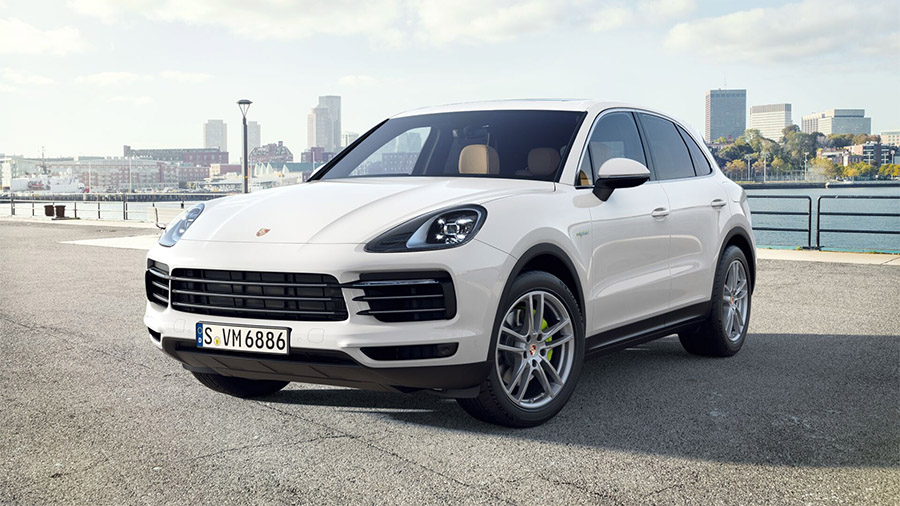Best SUVs
The Porsche Cayenne Facelift – All the Changes You Need to Know

Here we take an in-depth look at the latest Porsche Cayenne SUV facelift. The Cayenne has been given a host of changes covering exterior design, interior tech, as well as engine and suspension updates. Does this latest offering provide what is needed in the SUV market?
Exterior
The exterior of the Porsche Cayenne sees a considerably revised front and rear design, plus redesigned taillights, headlamps and wheel sizes. Optional HD Matrix LED headlights come with 32,000 pixels per headlight and the ability to be adjusted to 1,000 different levels of brightness depending on the driving situation. An expanded palette of colors is also available, bringing further customisation options.
Interior
Inside, the cabin is modern and filled with technology. Immediately noticeable are the 12.6-inch digital instrument cluster and optional head-up display, both of which allow for countless configuration settings. The 12.3-inch Porsche Communication Management (PCM) display is crisp and clear, with a 10.9-inch passenger information display also available. This display provides performance data and entertainment, although it can be blocked off from the driver using a reflective film in order to avoid distraction. The heated and air conditioning controls are physical buttons which are positioned out of the way on the dashboard, while the gear lever has been downsized to Porsche 911 size and moved up to the right of the steering wheel like the Taycan EV.
In terms of space, the Cayenne has plenty of room for passengers in the rear. Headroom is not compromised for taller individuals and the boot offers up to 810 litres of storage. In comparison to the non-hybrid model, the hybrid has a slightly smaller boot due to the additional electric battery.
Engines
There are three engine options available; a base 3.0-litre V6 turbo, the Cayenne E-Hybrid (3.0-litre V6 turbo with electric motor), and a 4.0-litre V8 biturbo. For example, the hybrid, which has 474hp and 600Nm of torque. Battery size has been increased, now standing at 25.9 kWh which gives the hybrid a WLTP electric range of 46 miles. There is also an 11 kW onboard charger for rapid charging of up to 15 watts, meaning 0-100% charge can be achieved in under 2.5 hours. The other engines are reasonable in terms of fuel. Officially, the Cayenne can achieve up to 31mpg.
Performance of the E-Hybrid is good for a 2.4-tonne SUV and integration of the electric motor and gasoline engine is smooth. Although the hybrid lacks the usual Porsche finesse in braking due to the regen system, the sheer mass of the Hybrid vs the regular model does detract from its overall dynamic performance.
For those opting for the standard steel springs, new two-valve shock absorbers provide improved comfort at low speeds and greater pitch and roll support at higher speeds. Unfortunately, none of the vehicles tested featured the passive setup, however, this is expected to deliver added refinement.
Overall, the Porsche Cayenne offers a range of improvements over the previous model. It is highly likely that this will make it a major contender amongst its SUV peers, however, only time will tell if it lives up to the Porsche name and delivers that extra bit of performance and luxury many expect from such a badge.
It’s also worth noting that a wide range of driver assistance systems are available, including night vision, lane keeping assistance and adaptive cruise control. The latter keeps a safe distance from traffic in front, even when on motorways and in city traffic.
There’s no doubt that the Cayenne has been given various technological updates, which should improve its appeal. However, these don’t come cheap – the top-spec S E-Hybrid adds an extra £11,800 to the price tag.
One of the main selling points for the Cayenne is its performance. Thanks to the developments made to the engine and suspension, the SUV has become faster and more agile than ever before. At higher speeds, the Cayenne feels surefooted and provides a level of grip that is usually reserved for sports cars.
For those who opt for the E-Hybrid model, Porsche’s technological advances make it a great alternative to petrol rivals. As well as the electric range, many of the components used have been taken from the Taycan EV, ensuring superior performance and quality.
Despite the recent upgrades, by no means is the Cayenne perfect. It may feel more rewarding to drive than a standard SUV, but it still lacks the outright involvement and engagement of something like a Jaguar F-Pace or BMW X3 M Competition. Interestingly, the Cayenne’s primary competition comes from within its manufacturer’s line-up. Those who are happy spending more cash are likely to opt for the more luxurious, sportier Macan SUV.
Overall, then, the Porsche Cayenne facelift delivers what is expected of a Porsche SUV. Performance, luxury and tech have all been improved, which will surely make the Cayenne an attractive choice in the SUV market. Whether or not this will be enough to sway buyers away from its competition is yet to be seen.



0 comments